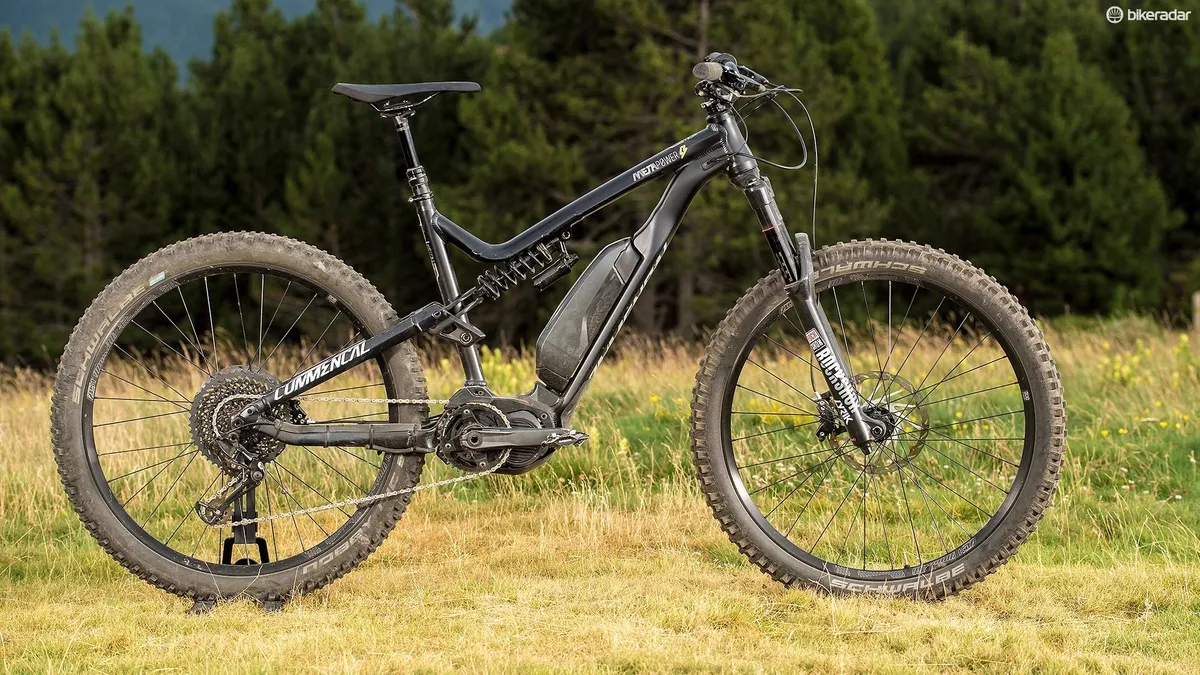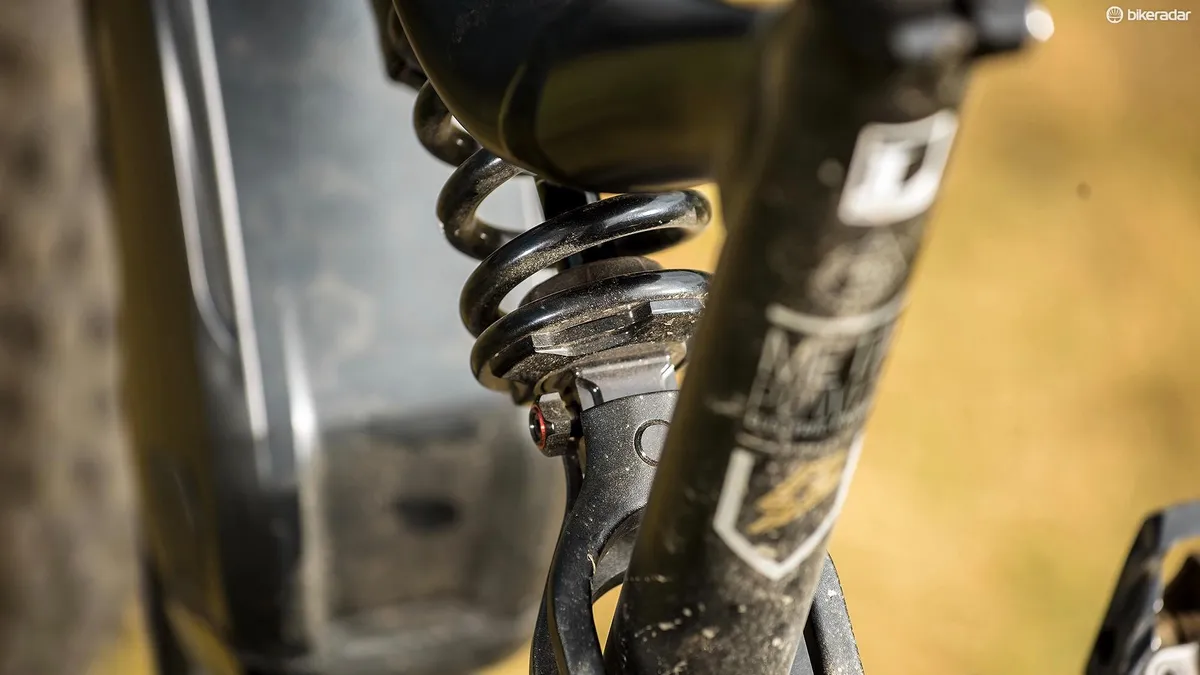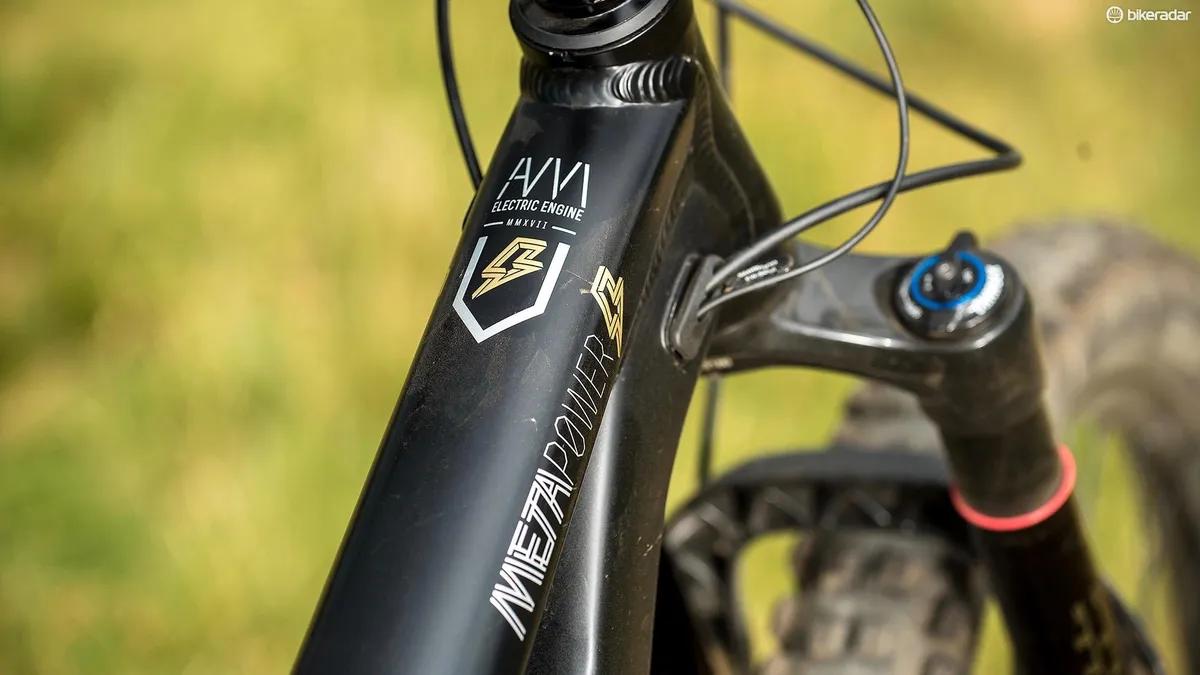Roughly speaking, bolting a Shimano motor in the middle of a well regarded enduro bike gives you the basics of a decent e-bike in 2017. Sure, there are challenges to overcome, but if you dot the 'i's and cross the 't's then unless you really screw up, you're going to build a cracking bike. Commencal has done just this with the MetaPower.
Having spent a fair bit of time over the past 12 months riding e-bikes, in my eyes the Shimano motor is (currently) leading the pack. Bosch's new e-MTB mode gets close to the ideal power delivery, but the package in which the Bosch motor comes and the control unit and screen let it down somewhat.
Specialized has worked with Brose to improve its offering, but I'm yet to spend much time on the latest version. Yamaha seems to have disappeared from the scene, while Rocky Mountain's great motor is, as yet, only seen on its models.
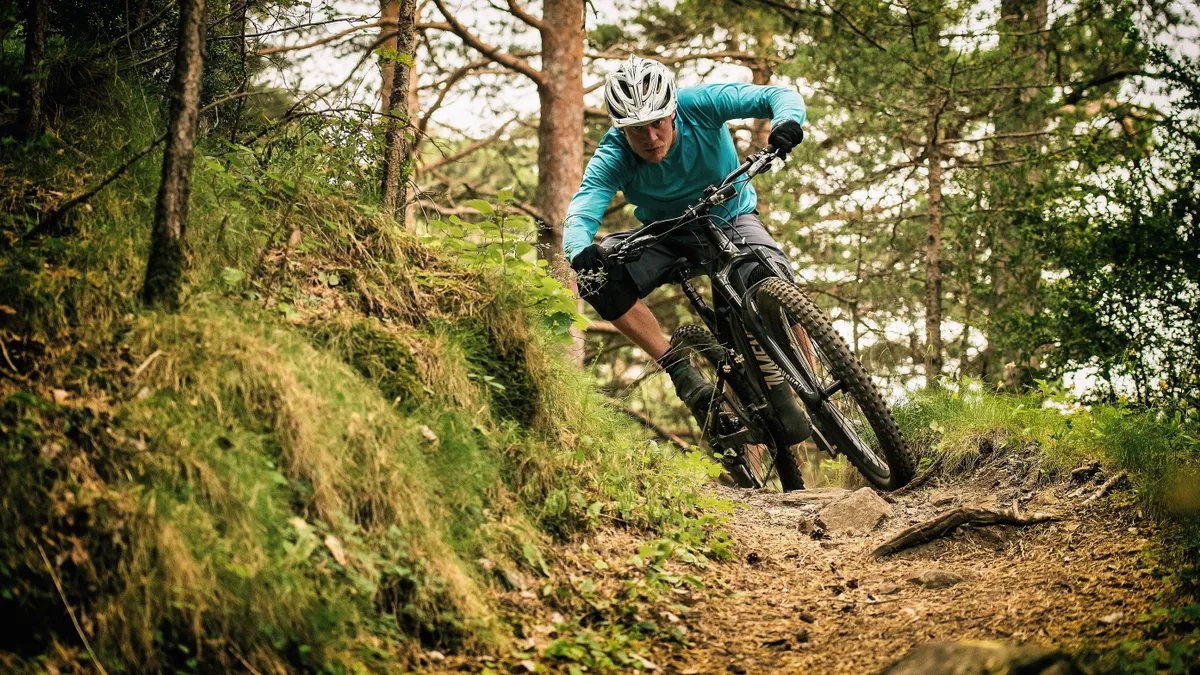
Commencal's MetaPower doesn't do anything fancy; there's no super carbon mainframe, no fancy integration, it's just a pedal assist motor in a bike. So how has it built such a riotous bike?
Check out our first ride review of the MetaPower on our YouTube channel
The Shimano motor
Any company that brings out an e-bike is likely to have tried a number of different motors, and Commencal is no different, having spoken to a number of suppliers.
But Shimano won out, largely thanks to the architecture of the motor. There's relatively little material located behind the bottom bracket, meaning you can keep the back end of the bike comparatively normal in length.
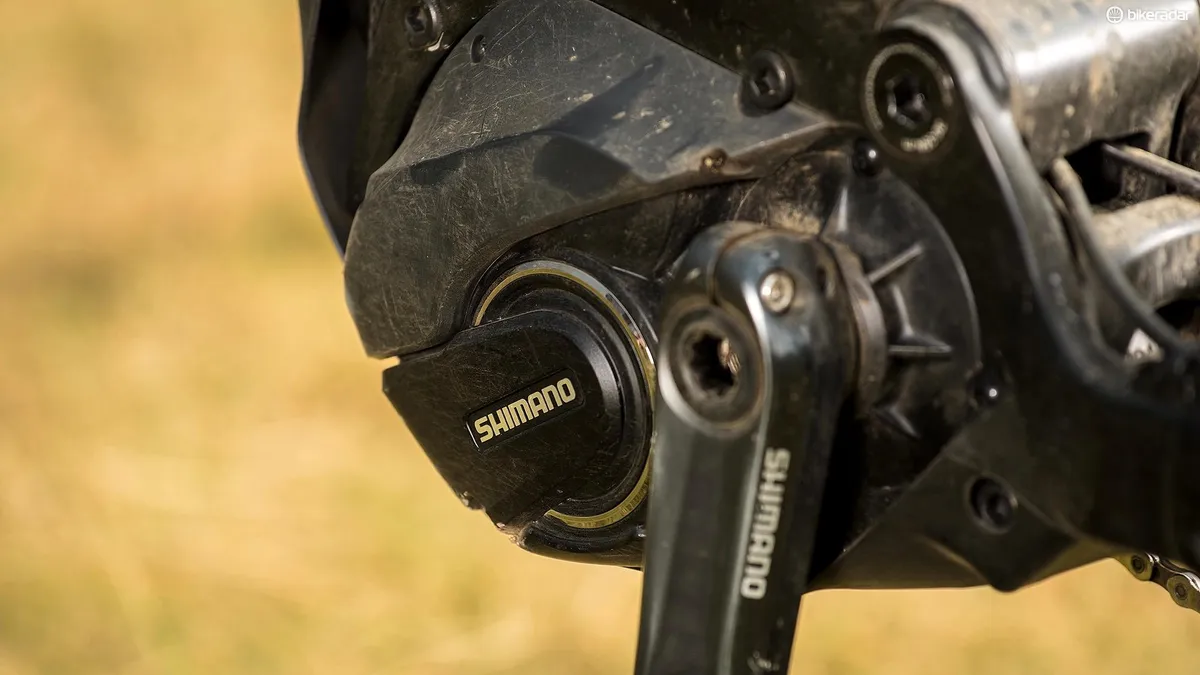
This means fewer compromises need to be made on geometry, allowing the bike to ride more like a normal non-assisted bike — something which has to be one of the key goals of any e-bike designed to be ridden aggressively.
It shouldn't come as a surprise that the suspension feels incredible
The other main benefit Shimano has over Bosch is the shifter and display system. Commencal uses the shifter based on a Di2 shifter — it's tuneable in its operation with a Bluetooth connection to its e-tube software and relatively intuitive to use on the bike.
It's also far less invasive on bar space than the Bosch version, and when you change mode you get a definitive click, rather than the feedback-poor Bosch. While the German screen shows you plenty of data, again it takes up too much bar real estate.
The Shimano display is smaller, brighter, in colour and sits neatly behind the bar, showing you the info you need, when you need it.
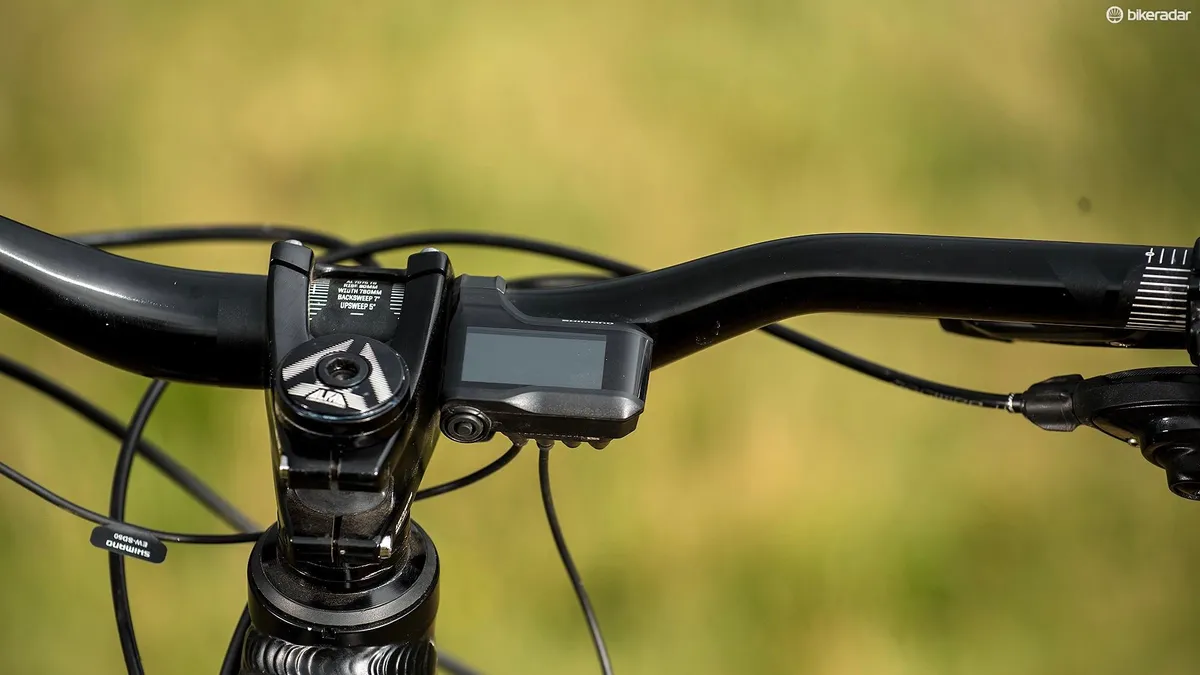
The differences in power delivery between the major manufacturers are much more close-run. Bosch has more modes and the e-MTB mode is adaptive. Shimano's feels smoother though and has a lot of low-end torquey grunt that makes technical climbs a lot of fun. Some might argue that it lacks the top-speed push that Bosch gives.
All in, I reckon for now Commencal has it right with the Steps motor.
Commencal MetaPower chassis
Commencal's Meta family has always been popular in the BikeRadar offices. In 2017, both the Meta V4.2 AM and Meta V4.2 TR (All Mountain and Trail versions of the platform) were close contenders in their respective Enduro Bike of the Year and Trail Bike of the Year showdowns.
Commencal is a fan of building bikes that suit the terrain of its native Andorra — steep, loose, rocky, fast and technical — so it's no surprise that on challenging terrain the bikes perform.
Commencal has taken the Meta's DNA and built a chassis that shares many of the same attributes, but built it around the Shimano motor. As such, you get a bike with suspension that quietly gets on with the job and geometry that encourages you to push the bike to its limits.
The frame is alloy and shares the low-slung, cut-away top tube that neatly holds the Metric length shock under it, and the 150mm of suspension is based around a traditional four-bar linkage.
On climbs it has a relatively neutral pedalling nature, best suited to sitting and spinning unless you use the shock's lock-out. On the way back down, it's capable of dealing with both large and small impacts, while also remaining active under braking for maximised grip and control.
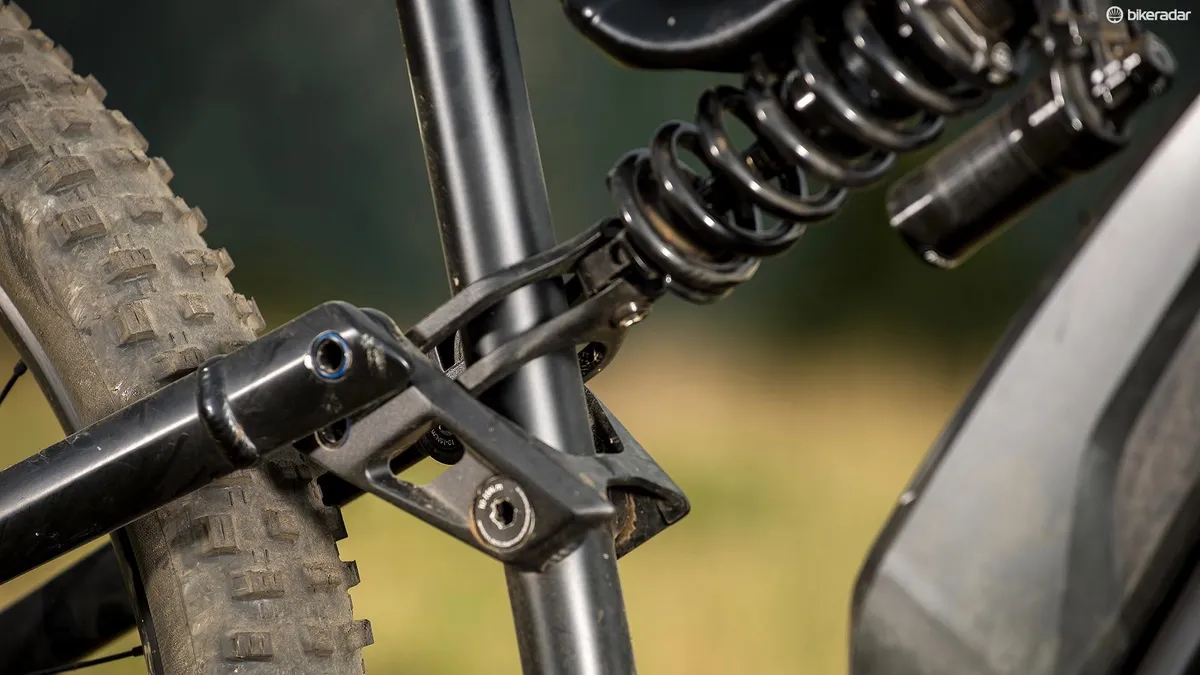
The geometry from Commencal is always up to date too. I rode a pre-production model, but the bikes shipping right now are even longer in reach and have a slightly higher bottom bracket.
With their development being done in the steep Pyrenean mountains, it's no surprise that this longish, slack-ish geometry has taken hold. The wide heel-rub prone dropouts are still there, but that's perhaps the only real criticism of the nuts and bolts of the frame.
The bike is calm in the rough, confident when things get super choppy and fast when you're able to let off the brakes
Commencal hasn't tried to hide the Shimano battery inside the downtube, as seen on other bikes. The tube's shapes still give smooth lines as they merge into the battery, but it's very much still sat there on top of the tube.
Compared to earlier e-bikes with the same architecture, I feel Commencal has done a fair job of smoothing the lines. And does full integration really make much difference? I'm not convinced anyway.
Here are the key figures for the production size Large:
- Seat angle: 75 degrees
- Head angle: 66 degrees
- Reach: 458mm
- Bottom bracket drop: -17mm
- Chainstay length: 444mm
- Wheelbase: 1,216mm
Commencal MetaPower kit
Currently there's not much out there in terms of kit that's poor; virtually every bike comes with either RockShox or Fox suspension and Shimano or SRAM drivetrains. Commencal has worked with RockShox on the suspension on the soon to be available models and a pricier Fox version may come out later.
I rode a pre-production version, but the spec is largely correct for the top level model.
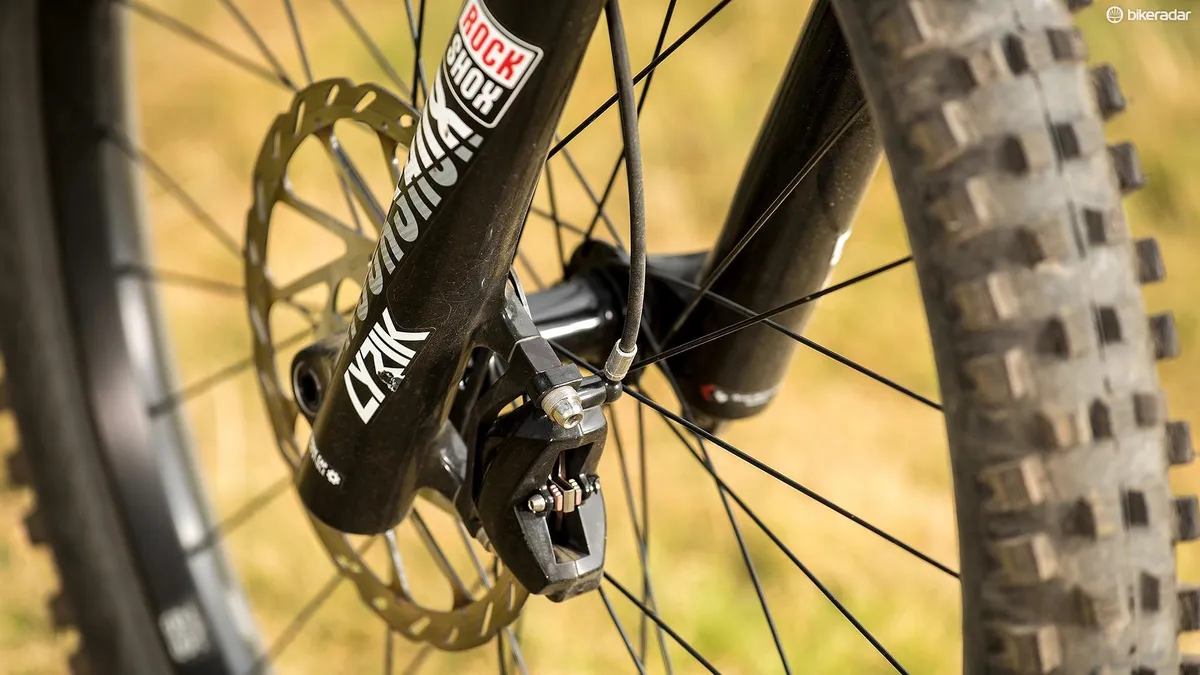
The fork is a RockShox Lyrik RCT3, its top-line enduro fork, and with 160mm of travel and a stiff chassis it's a good match for the bike. Controlled and stable throughout its stroke, I have no complaints.
The back end was controlled by a RockShox Super Deluxe Coil RCT. With a reasonably progressive linkage design and a motor to help on the hills, using a coil shock means suppleness through its stroke, as well as reasonable mid-stroke support.
There's plenty of adjustment available, though people outside a regular height to weight ratio might need to find the right spring — they're certainly less immediately adjustable than an air shock.
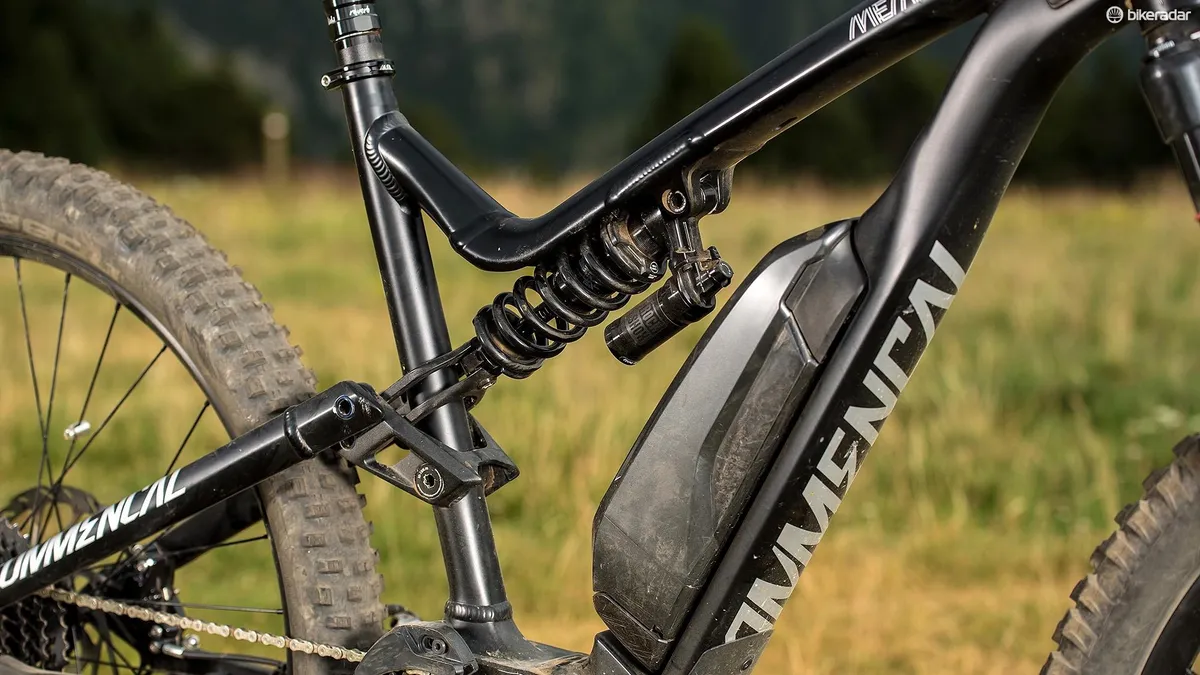
Wide wheels and burly tyres are a must on such a bike, and Commencal had a pair of e13 LG1 wheels on my test bike. These gave plenty of support to the 2.6" Schwalbe rubber: a Magic Mary up front and a Nobby Nic at the back, both in sticky Addix compounds and with the Apex casing.
When the bikes come to production they will be fitted with Maxxis High Roller tyres in 2.6" Wide Trail variants and Spank Oozy Trail 395 wheels.
While both Shimano and SRAM are more than likely to say that their drivetrains shouldn't be mixed, Commencal has the Shimano motor with a SRAM EX1 drivetrain — it's 8-speed cassette and shifter have been designed for the extra rigours of e-bike drivetrains.
SRAM's Code brakes bought the whole thing to a stop, while most of the finishing kit came from Commencal's in-house Ride Alpha brand.
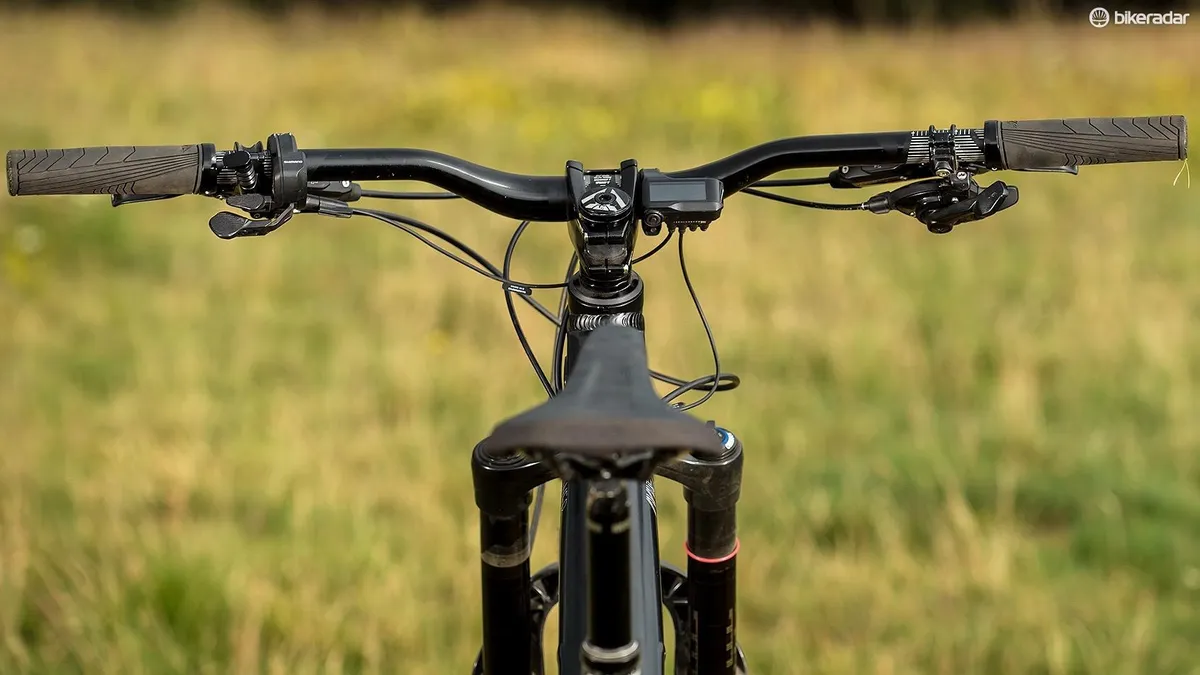
Commencal MetaPower ride
Plenty of other e-bikes have been reviewed on BikeRadar, and our general feelings so far have been that the added weight and centralised distribution of that weight generally make the suspension work very, very well. Assuming the geometry is good, then we've also found them to be incredibly confidence inspiring and calm on descents.
This is no different with the MetaPower. Commencal could have stuck the most basic shock and fork on the bike and it would still feel good, but with some of the better components on the market plugged in to the frame, it shouldn't come as a surprise that the suspension feels incredible. Supple yet controlled on descents the bike ate up hits big and small alike.
With a motor assisting on the climbs there's little need to spend prolonged time stood on the pedals, so during the test rides I never felt the need to lock out the shock.
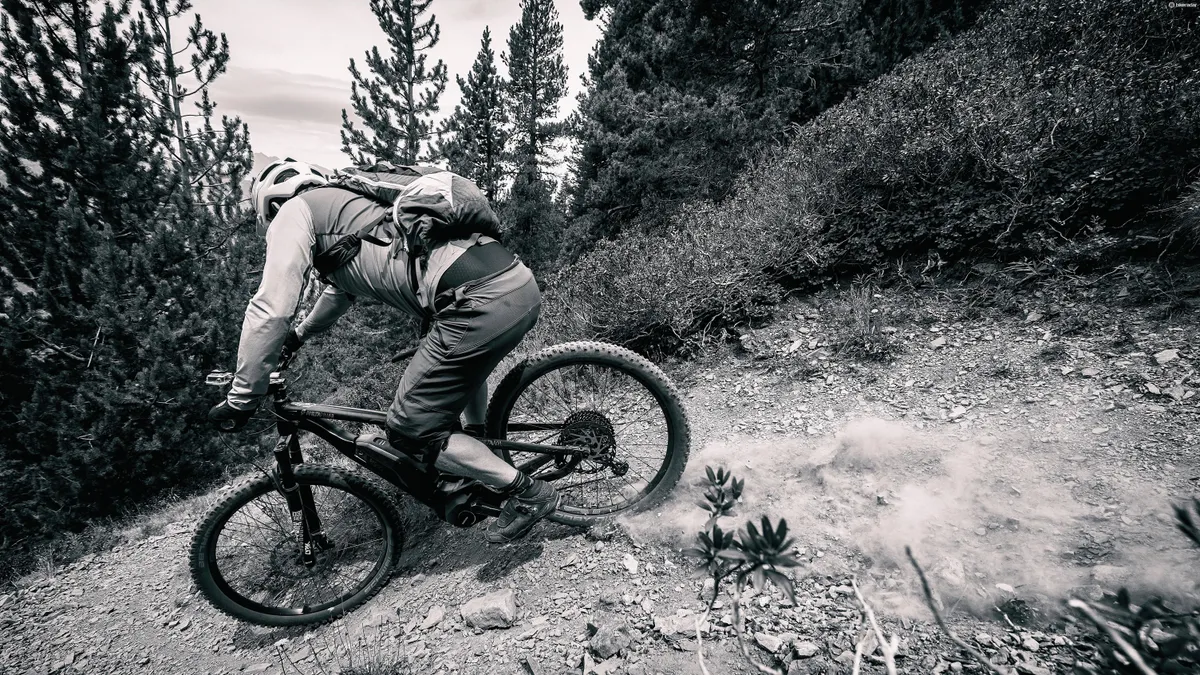
I was expecting the MetaPower to descent well, you just need to look at the numbers and have experience of their non-powered bikes to have a fair assumption that it'll perform well — so I won't bang on too much about that. In short, the bike is calm in the rough, confident when things get super choppy and fast when you're able to let off the brakes.
I wasn't quite expecting the bike's climbing performance though. I've found in the past that the seat angle feels a touch slack, and the Meta can feel a little sluggish on climbs.
Of course, a motor is going to negate a lot of that and I still feel that the bikes sit into the travel a fair bit. So despite the geo figures, it does feel pretty laid back when you're sat pedalling. However, I took the bike up some super steep, technical and loose climbs and here it excelled.
The motor gives plenty of assistance when you're grinding away at lower speeds, putting a lot of pressure through the cranks. This, combined with the grip from the Nobby Nics mean you can pretty much get up anything, so long as you can get the front wheel pointing where you want it to be.
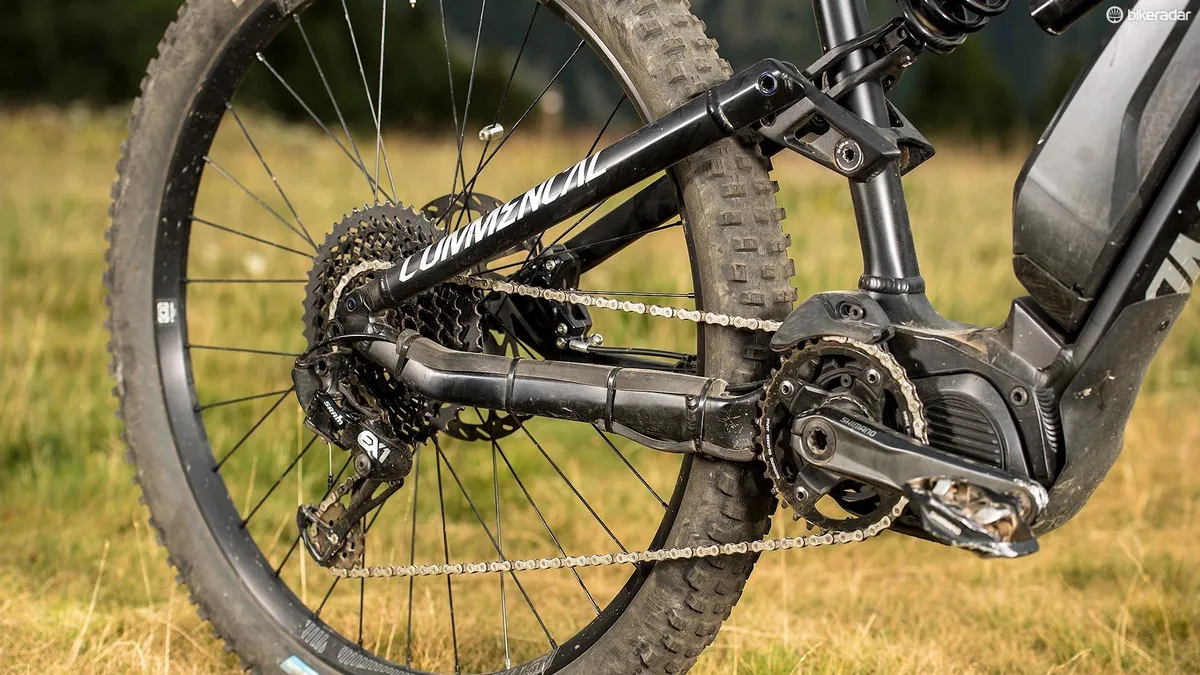
For shorter obstacles you can get a good run up and pummel the bike up and over things, while on more prolonged technical sections, say a section of trail covered in matted roots, the insatiable appetite of the bike to just keep going means you're likely to get up it.
You do, of course, have to keep the front end weighted, to make sure you still have full control of where the bike is aimed, but the balance of the bike with its longer front and mid-length rear means you can easily balance your body weight in the right place.
Production bikes will be longer in their reach than the test bike I rode. This isn't something I ever really complain about and here that's the same.
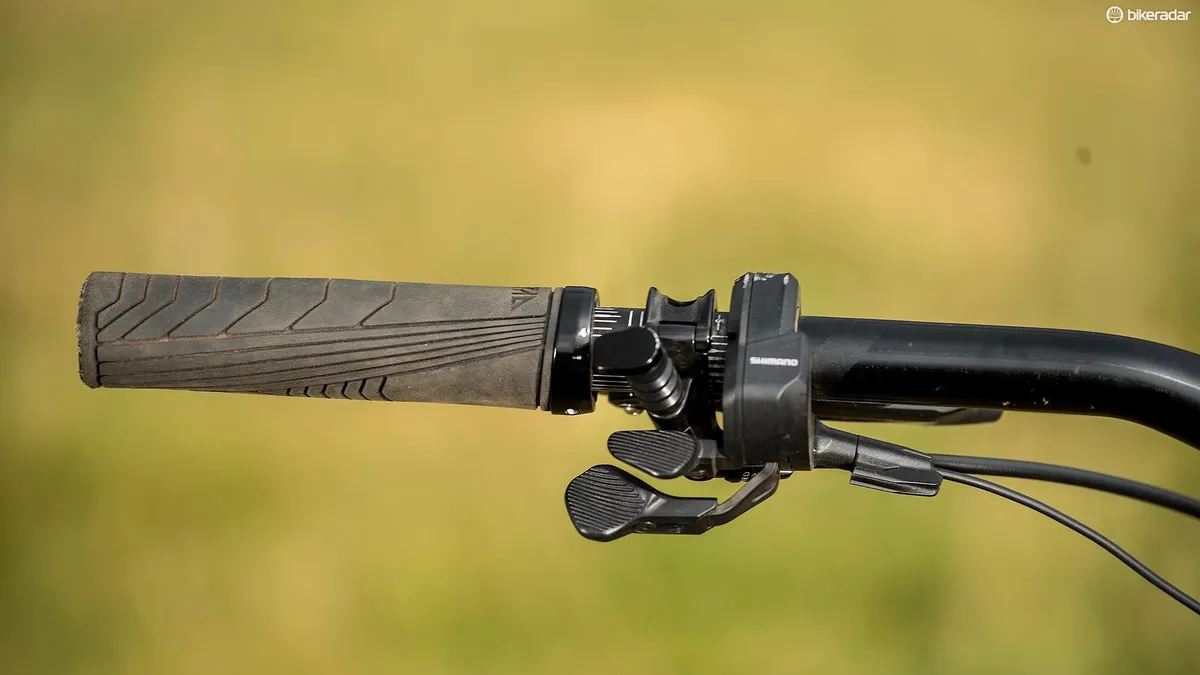
Early on in my ride I was told that the pedal clearance was going to be raised by 10mm on production bikes. I'm a fan of low bottom brackets; lowering them drops your weight nicely below the BB, aiding cornering grip and speed, but I was a bit sceptical that it is to be raised.
Commencal will achieve this by raising the BB by 5mm and fitting 5mm shorter cranks. On riding the bike up technical trails I'd agree that this is a good shout, as I suffered numerous pedal strikes.
On trails that you'd normally struggle to get up, the assisted nature of the bike means you're more likely to be just pedalling straight through tight sections faster, which means the suspension is likely to be deeper in its travel as it compresses over such obstacles.
Commencal MetaPower models and prices
Commencal will release three models of the MetaPower: the Origin, the Essential and the Race.
Origin
The Origin comes with a RockShox Yari RC fork and Super Deluxe R air shock, along with a full Shimano Deore 1x10 groupset (11-42t cassette). Formula hubs will be built into WTB Scraper i35 rims, with High Roller tyres in 2.6" width, Maxx Terra compound and Exo (f) and DD(r) casings.
- €3,999 / $3,999 / CAD5,199
Essential
Next is the Essential with a Lyrik RC and Super Deluxe Coil RCT shock. There's a SRAM GX 1x11 groupset and SRAM Guide RE brakes, and it rolls on the Formula e-bike hubs with Spank Oozy Trail 395+ rims — the same tyres are present again.
- €4,499 / $4,499 / CAD5,899
Race
Top of the tree is the Race. This has a Lyrik RCT3 and Super Deluxe Coil RCT shock, the SRAM EX1 groupset and Guide RE brakes, and a complete Spank Oozy Trail 395+ wheelset.
- €4,999 / £4,999 / CAD6,499
